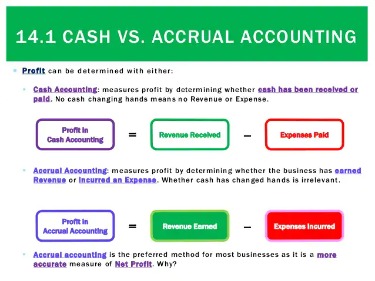Content

In financial accounting, COGS will appear on the profit and loss statement and is deducted from a company’s revenue to calculate its gross profit margin. Let’s say you want to calculate the cost of goods sold in a monthly period. After accounting for the direct costs, you find out that you have a beginning inventory amounting to $30,000. Throughout the month, you purchase an additional $5,000 worth of inventory. Finally, after taking inventory of the products you have at the end of the month, you find that there’s $2,000 worth of ending inventory. Conversely, COGS excludes operating expenses – i.e. indirect costs – such as overhead costs, utilities, rent, and marketing expenses.
- Now, this is more of an accounting thing but none the less it is important.
- First-in, first-out is a valuation method in which the assets produced or acquired first are sold, used, or disposed of first.
- When it comes to cost of goods sold, this means understanding what exactly you’re paying and why.
- The average cost method is when a company uses the average price of all goods in stock to calculate the beginning and ending inventory costs.
- To do this, a business needs to figure out the value of its inventory at the beginning and end of every tax year.
- Operating expenses are indirect costs that keep a company up and running, and can include rent, equipment, insurance, salaries, marketing, and office supplies.
However, if you buy the frame in order to complete an order for your photography business, how much you paid for the frame would factor in to your cost of goods sold for your business. No aspect of business proves the adage “to make money you must spend money” truer than inventory; or more to the point – the cost of goods sold. Knowing how much your products cost to make and sell can help you determine which products you should continue to sell and which ones you might want to discontinue. When costs change during the accounting period, a cost flow will have to be assumed. Some common cost flow assumptions include FIFO, LIFO, and average. The cost of goods sold formula is calculated by adding purchases for the period to the beginning inventory and subtracting the ending inventory for the period. The best method for calculating COGS is to use an automated, online calculator .
Video: What Is COGS?
COGS is an important metric on your financial statements, as it can reveal how effective your company is in managing its labor and supplies within the production process. Understanding your COGS can offer insights into improving your profitability, and help your company adapt its pricing, determine net profit, and optimize both direct and indirect costs. The FIFO method assumes that the oldest inventory units are sold first. This means that the inventory remaining at the end of an accounting period would be the units that were most recently produced.
What does the cost of goods sold mean?
The cost of goods sold tells you how much it cost the business to buy or make the products it sells. This cost is calculated for tax purposes and can also help determine how profitable a business is.
If your https://intuit-payroll.org/ sells products, you need to know how to calculate the cost of goods sold. This calculation includes all the costs involved in selling products. Calculating the cost of goods sold for products you manufacture or sell can be complicated, depending on the number of products and the complexity of the manufacturing process. For example, airlines and hotels are primarily providers of services such as transport and lodging, respectively, yet they also sell gifts, food, beverages, and other items.
How to Account for Leftover Inventory
Cost of goods sold refers to the stock costs of the goods that a company has sold over a particular period. The COGS is determined by the stock valuation method that is used by the company, such as first-in first-out , last-in first-out or average cost. Examples of service companies are accounting firms, law offices, consultants, and real estate appraisers. For example, assume that a company purchased materials to produce four units of their goods. COGS does not include general selling expenses, such as management salaries and advertising expenses. These costs will fall below the gross profit line under the selling, general and administrative (SG&A) expense section. Cost of goods sold is found on a business’s income statement, one of the top financial reports in accounting.
This gives us the Cost Of Goods Sold Formula cost of all inventory, but we can’t stop there. We only want to look at the cost of the inventory sold during the period. Thus, we have to subtract out the ending inventory to leave only the inventory that was sold. First in, First Out – this means that the first good that was manufactured is sold first. Companies that adopt this method sell least expensive products first which leads to a lower COGS. If you’re a multichannel merchant, Extensiv makes it simple to track your COGS by each channel. Thanks to Extensiv Order Manager’s Reports feature, you can dive into detailed operations analytics, so you can see where you’re making money, losing money, and which SKUs you should prioritize.
Cost of goods sold versus operating expenses
Cost of Goods Sold , otherwise known as the “cost of sales”, refer to the direct costs incurred by a company while selling its goods/services. Ending InventoryThe ending inventory formula computes the total value of finished products remaining in stock at the end of an accounting period for sale. It is evaluated by deducting the cost of goods sold from the total of beginning inventory and purchases. Many service companies do not have any cost of goods sold at all. COGS is not addressed in any detail ingenerally accepted accounting principles, but COGS is defined as only the cost of inventory items sold during a given period.
Transcript : Church & Dwight Co., Inc. Presents at CAGNY Conference 2023, Feb-22-2023 03 – Marketscreener.com
Transcript : Church & Dwight Co., Inc. Presents at CAGNY Conference 2023, Feb-22-2023 03.
Posted: Wed, 22 Feb 2023 20:00:00 GMT [source]
In this case, you always count backward from the last thing you acquired. Here, your beginning inventory is the same as your last ending inventory. Purchases are anything you add, and ending inventory is what you are left with at the end, after all the selling and purchasing. In most layman’s terms, you can say the cost of goods is the summation of beginning inventory and purchases, excluding ending inventory. The articles and research support materials available on this site are educational and are not intended to be investment or tax advice. All such information is provided solely for convenience purposes only and all users thereof should be guided accordingly. Direct Labor Cost paid for the production of goods or rendering of services.
Are Salaries Included in COGS?
If a company can reduce its COGS through better deals with suppliers or through more efficiency in the production process, it can be more profitable. As mentioned above, COGS includes direct expenses but excludes indirect costs. Now, this is more of an accounting thing but none the less it is important. Your balance sheet needs to list all your expenditures and incomes. So knowing the amount you have spent in getting the products to be sold you can arrive at actual expenses by including other costs incurred in the overhead i.e. sales and marketing.

They will be considered while calculating your beginning inventory for next year. Recall that we also mention various methods in calculating COGS which may give numerous results. Subsequently, the value of net income decides the amount of income tax needed to be paid by the company. By decreasing the value net income, it also lessens the tax payment burden. Still, lower net incomes also mean lower value of dividends shared to the stockholders.

